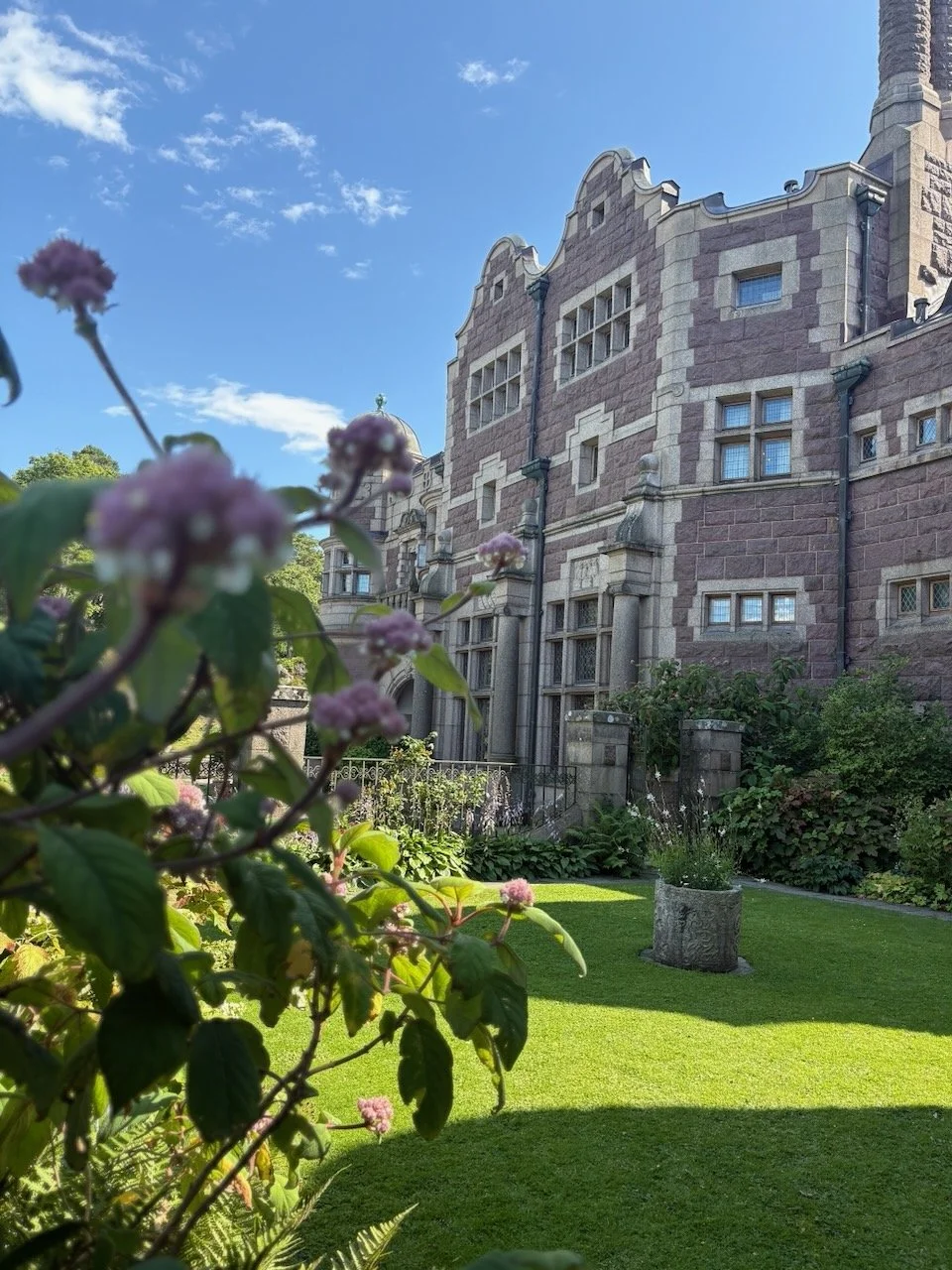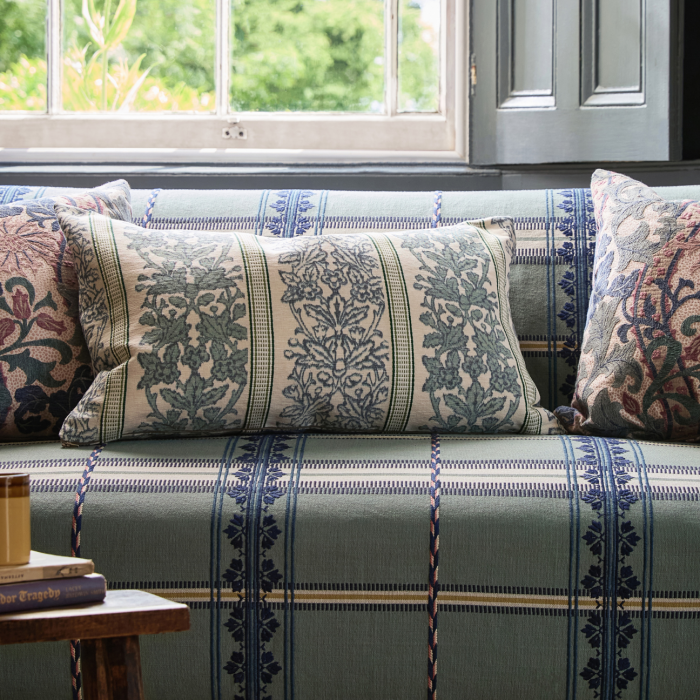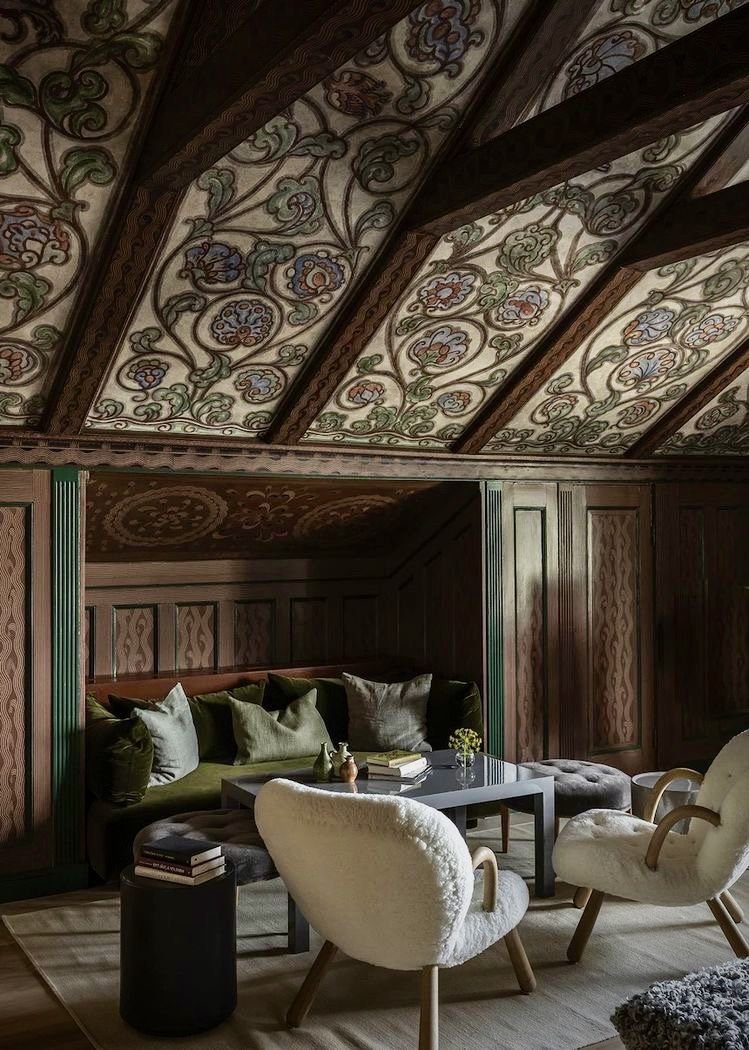The Influence of the Arts & Crafts Movement on Scandinavian Heritage Homes
A visit to Tjolöholm Slott, and why this 19th-century philosophy still matters when renovating historic homes in Sweden
This summer, while wandering through the oak-panelled halls of Tjolöholm Slott, I felt that familiar tug - the quiet reminder that good craft never ages. The castle, a late-19th-century masterpiece shaped by the British Arts & Crafts movement, embodies everything we champion at Studio A Mogard when working with heritage property renovation in Sweden and beyond.
It’s a place where material honesty, human-centred design and meticulous craftsmanship stand proudly untouched by time - values that remain just as relevant when renovating an older building toda.
A BRIEF LOOK BACK: WHY THE ARTS & CRAFTS MOVEMENT STILL SHAPES MODERN SCANDINAVIAN INTERIORS
The Arts & Crafts movement emerged in Britain around 1880 as a reaction to the growing industrialisation of manufacturing. Designers like William Morris believed deeply that beauty, utility and craftsmanship were inseparable - that a home’s architecture, joinery, textiles and everyday objects should be well-made, meaningful and rooted in natural form.
This thinking travelled widely, influencing everything from early Scandinavian architecture and renovation traditions to the values we see in contemporary Swedish design today - sustainability, tactility, simplicity, integrity.
And then there was Liberty London, founded in 1875, which played a monumental role in bringing Morris’ philosophy to a wider audience. Liberty textiles, prints and furnishings helped disseminate the Arts & Crafts aesthetic across Europe - including directly into the interiors of Tjolöholm Slott. Many original pieces remain in the castle today, making it one of the world’s best-preserved examples of Liberty-influenced design.
Walking through Tjolöholm’s stained-glass passages and perfectly proportioned rooms feels like stepping into the blueprint for timeless interior design for historic homes.
WHAT THIS MEANS FOR RENOVATING HISTORIC HOMES IN SWEDEN TODAY
When we work on renovating listed buildings in Sweden, the parallels with Arts & Crafts principles are striking:
Honouring existing craftsmanship
Whether it’s preserving original panelled walls or restoring period-appropriate mouldings, the goal is always to respect the building’s origins.Material integrity
Oak, stone, natural textiles and lime-based paints - materials Morris championed, remain essential when designing luxury interior design for heritage homes.Thoughtful joinery
Bespoke cabinetry isn’t a luxury in heritage homes - it’s often a necessity. Many older Swedish apartments require bespoke joinery for historic properties to support modern storage without disrupting architectural character.Balancing old and new
Thoughtful upgrades - like moving a kitchen in an older building, improving flow, or updating bathrooms - must integrate seamlessly into the home’s original structure.
It’s not about making old homes modern. It’s about allowing heritage and contemporary living to coexist beautifully.
WHY THOUGHTFUL CRAFT STILL MATTERS: LESSONS FROM TJOLÖHOLM
Tjolöholm Slott offers a quiet masterclass in how to renovate a historic home in Sweden with care:
Every room is structured around proportion and light.
Every material choice has a purpose.
Every detail tells a story.
These same principles guide our work in high-end residential architecture across Scandinavia. This is why we place such emphasis on:
Preserving architectural features during renovation
Sourcing period-appropriate materials
Designing bespoke furniture and cabinetry
Managing heritage building regulations
Creating coherent material palettes for older homes
Whether it's an old farmhouse renovation on Gotland or a heritage property in central Stockholm, the approach remains grounded in the same philosophy: timeless, crafted, and intentional.
A MODERN ECHO: THE REVIVAL THROUGH CABANA, MORRIS & CONTEMPORARY SCANDINAVIAN DESIGN
Today, brands like Cabana Magazine continue to reinterpret William Morris’ patterns, celebrating the layered, expressive interiors that defined the Arts & Crafts era. These influences pair surprisingly well with Scandinavian architecture - understated forms enriched through texture, craftsmanship and natural colour.
This quiet revival is visible in many of the heritage property renovations we design across Scandinavia, where clients want interiors that feel grounded, storied and enduring - not trend-led.
WHY WE KEEP RETURNING TO CRAFT
Renovating a historic home in Sweden is more than just a construction project. It’s a long conversation between the past and the present - between what a building once was and what it can become. Spaces with soul don’t come from rushing. They come from considered decisions, thoughtful material selection and a deep respect for what already exists. This is why the Arts & Crafts movement still sits at the heart of so many of our projects.




